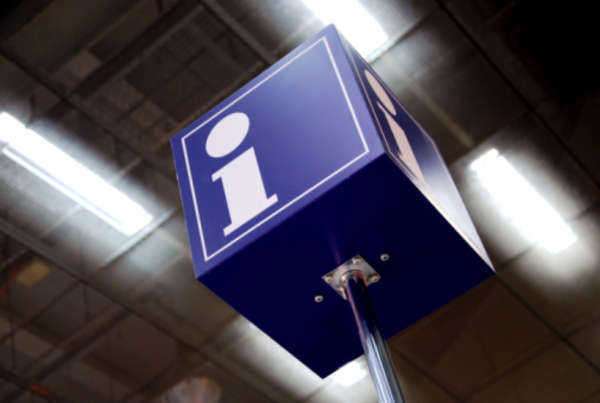Procedures Committees Overview

Introduction:
The United States Senate is the upper house of the United States Congress and is responsible for a wide range of legislative duties. In carrying out these duties, the Senate has developed a set of procedures and rules to govern its operations and ensure that it effectively fulfills its responsibilities.
One of the most important areas of Senate procedure is the use of committees. Committees play a critical role in the legislative process by conducting research, holding hearings, and producing reports on important policy matters.
This article will provide an in-depth look at Senate procedures and the role of committees in the legislative process. We will explore how these procedures have impacted US politics and the legal system over the years. We will also examine ten important facts about the case itself to provide a comprehensive understanding of this topic.
- The History of Senate Procedures:
The history of Senate procedures dates back to the earliest days of the Senate. In 1789, the Senate established its first set of rules to guide its operations. Since then, these rules have been amended and updated several times to reflect changing political and social landscapes.
Today, Senate procedures are governed by a set of rules that cover everything from how bills are introduced to how committee chairs are selected. These rules are reviewed and updated at the beginning of each new Congress.
- The Role of Committees in the Legislative Process:
The Senate’s system of committees is one of its most important features. Committees are responsible for conducting research, holding hearings, and producing reports on important policy issues. They also play a key role in shaping legislation by considering bills before they are debated by the full Senate.
There are several types of committees in the Senate, including standing committees, select committees, and joint committees. Each committee has a specific set of responsibilities and is made up of a group of senators who are appointed by the Senate leadership.
- The Impact of Committees on US Politics:
The use of committees has had a significant impact on US politics over the years. Committees provide a forum for senators to debate policy issues and develop legislation. They also provide a check on the power of the executive branch by conducting oversight of government programs and agencies.
At times, committees have been the focus of political controversy. For example, in recent years, some committees have been accused of politicization and bias, leading to criticism about their effectiveness and impartiality.
- The Impact of Committees on the Legal System:
Committees also play an important role in the legal system. Many committees have jurisdiction over issues related to the administration of justice, such as the judiciary, civil rights, and criminal justice.
By conducting oversight and producing research reports, committees can have a significant impact on the development of laws and policies related to the legal system.
- The Confirmations Process:
One of the most significant roles of Senate committees is the confirmation of presidential appointees. The Senate has jurisdiction over the confirmation of executive branch officials, including Cabinet members, agency heads, and judges.
The process of confirming nominees involves a thorough review of their qualifications and experience. The Senate committee responsible for confirming the nominee will typically hold hearings to question the nominee and gather information about their background. The committee then votes on whether to recommend that the full Senate confirm the nominee.
- Contempt of Congress:
Under Senate procedures, committees have the power to hold individuals in contempt of Congress for failing to comply with subpoenas or providing false testimony. Contempt of Congress is a serious offense and can result in fines or even imprisonment.
In recent years, the use of contempt proceedings has become more frequent, with several high-profile cases involving executive branch officials who refused to comply with congressional subpoenas.
- The role of the Senate Judiciary Committee:
One of the most important committees in the Senate is the Judiciary Committee. This committee has jurisdiction over issues related to the judiciary, including the nomination of federal judges and Supreme Court justices.
The Judiciary Committee is also responsible for oversight of the Department of Justice and the Federal Bureau of Investigation. In recent years, the committee has been the focus of controversy over its handling of high-profile nominations and investigations related to the Trump administration.
- The role of the Senate Intelligence Committee:
Another key committee in the Senate is the Intelligence Committee. This committee has jurisdiction over issues related to national security and intelligence gathering. It is responsible for overseeing the intelligence community and conducting investigations into matters related to national security.
In recent years, the Intelligence Committee has been at the center of several high-profile investigations, including the investigation into Russian interference in the 2016 presidential election.
- The role of the Senate Finance Committee:
The Senate Finance Committee is responsible for overseeing issues related to taxation and revenue. It has jurisdiction over issues related to Social Security, Medicare, Medicaid, and other entitlement programs.
The Finance Committee is also responsible for overseeing trade policies and negotiating international trade agreements. In recent years, the committee has been involved in important debates over tax reform, healthcare reform, and international trade policy.
- The role of the Senate Appropriations Committee:
The Appropriations Committee is responsible for overseeing the federal budget and spending. It is responsible for allocating funds to various government programs and agencies and ensuring that those funds are spent appropriately.
The Appropriations Committee is also responsible for conducting oversight of government spending to ensure that taxpayer dollars are being used effectively. In recent years, the committee has been the focus of debates over government spending and deficits.
Conclusion:
The Senate’s system of procedures and committees plays a critical role in the legislative process and has a significant impact on US politics and the legal system. By providing a forum for debate, conducting oversight, and producing research reports, committees can shape legislation and hold government officials accountable.
While committee procedures and practices may continue to evolve over time, the role of committees in the Senate is likely to remain an essential feature of American politics and governance.
The United States Senate proves to undertake many responsibilities at the legislative level. Therefore, in order to provide for more functional operation of the Senate, it divides its legislative functions to certain Senate committees. Currently, the Senate has twenty standing committees, sixty-eight subcommittees, and four joint committees.
The Senate committee system shares many qualities similar to those implemented by the House of Representatives, but it does provide for its own specific guidelines and regulations so as to provide for differentiation between the committees of both chambers. The committees themselves are separated into three general types. Standing committees are generally delegated with most legislative jurisdiction. Subcommittees are in charge of specific areas of the committee’s work. Select and joint committees usually handle oversight responsibilities.
Committees are set up in a similar fashion in which the Senate is constructed. There is a chair for each committee, and the majority of committee members will reflect the majority party in the Senate. The chair of a committee will typically control the overall agenda of their committee. Committee membership is comprised by the respective parties assigning members to each committee, and each committee will then distribute those members in subcommittees. However, there is a number limit placed on the committee positions a Senator may hold at any given time.
Committees can have quite a good amount of influence regarding the bills that get introduced on the Senate floor, as well as their actual passing into law. The bills that committees will consider can help set the overall agenda of the Senate as a whole. There are four general actions that committees and subcommittees will undertake. Firstly, a committee will refer to certain executive agencies regarding comments and explanations on a particular bill. Then it will hold hearings to gather further information from experts in the matter that are not members of any Senate committee.
The bill is then subject to amendments and revisions to be made by the committee to ensure that the committee agenda coincides with the provisions of the bill. Finally, the bill will be presented in its revised form to the Senate, along with a report describing its overall purpose and provisions contained within.
As mentioned, standing committees prove to have the most legislative jurisdiction among the three types of Senate committees. They have various responsibilities delegated to them, among them including overseeing departments of the Executive Branch, the power to subpoena witnesses and evidence within their jurisdiction, and the power to block nominees and bills from reaching the consideration of the Senate. Examples of standing committees include the Senate Judiciary Committee, the Senate Banking Committee, the Senate Transportation Committee, and the Senate Armed Services Committee.
The Senate Judiciary Committee is in charge of conducting hearings regarding the appointment of federal judges that are nominated by the President. The Senate Judiciary will conduct the hearings prior to the Senate body conducting a vote on the nominations. Furthermore, the Senate Judiciary Committee has quite a wide jurisdiction in matters pertaining to criminal law.
The Senate Banking Committee has quite a variety of responsibilities charged to it. Formally, the United States Senate Committee on Banking, Housing, and Urban Affairs deals with jurisdiction in matters relating to banks and banking to financial aid to commerce and industry. The Senate Banking Committee also deals with mass transit, housing matters, and urban development.
Special Senate Committees are considered to be non-standing and are implemented on a temporary basis. Once they’re overall purposed is completed, or their goal is met, the committees are dissolved. An example of a special committee would the Senate Water Gate Committee, which was created to investigate the Watergate Scandal involving the Nixon Administration. Other special committees include the Impeachment Trial Committee and the Select Committee on Ethics.
Joint Committees involve Congress members as a whole, appointing delegates from both the Senate and the House of Representatives. Joint Committees have varying tasks and responsibilities, but the main difference from other committees is that bills and nominations are not referred to these kinds of committees. Some joint committees are in charge of overseeing other bodies’ governments, such as the Library of Congress being overseen by the Joint Committee on the Library. In other situations, joint committees create reports advising for certain measures to be taken.



















